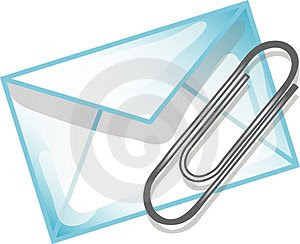Scan your hard disk. I say your, not your system’s. Single out an occasion when you are in office but have not sent or received any e-mail. No results should be the ideal systemic response. All that I drive home is the fact that e-mail is now the most preferred mode of business correspondence. But ask yourself, do you lend the seriousness that an e-mail as a business correspondence deserves?
Here are five tips to help you master the art of effective e-mail writing for successful business.
1. Keep your subject line concise and comprehensible.
Did you try wading through the flood of e-mail when you come back from a vacation or try searching for a particular e-mail? The subject line of the e-mail must have been your only savior. The subject line of the e-mail should be well thought and comprehensible so as to summarize the content of an e-mail.
Here are some examples of subject lines:
[Blank] - It projects you as arrogant.
Never miss this one! - What you find worthy might not be so for others.
That file you asked for. – Better, yet risky. Your recipient might have asked for some other file from someone else. Do you expect him to remember what he asked from each of the team members?
4 guides migrated … rest to be done by Sept 01- Excellent. Your manager, must have heaved a sigh of relief but only if you are working on the last batch of deliverables.
Ideally: When you use the ‘Reply’ option, ensure that you modify the subject line to befit the context. Consider starting a new thread with appropriate subject line if you need to start a new discussion in the current thread.
2. Keep your message well-composed and well-formatted.
Your reader might be going through a bad day today. He might not have time enough to read through your block of text. An excellent idea might go neglected because of poor presentation. To ensure that the reader reads through all the points that you want to convey, present them in the form of a list. Better if you can add an introductory line that states how many parts the message has. Also consider using standard capitalization and spelling checks. Skip lines between paragraphs. Avoid fancy typefaces.
Ideally: Substantial points can be split up into separate messages for the convenience of the recipient.
3. Populate the address fields properly.
Many a time, we populate the wrong address fields and land in embarrassing situations. Here is how you must populate the address fields to avoid such embarrassments:
· To – the people you are directly addressing
· Cc – the people you are indirectly addressing. Copy only those who need to be copied; not your entire universe of contacts.
· Bcc – like Cc, except that the addresses in To and Cc do not know that the addresses in the Bcc are included in the conversation. The To and Cc addresses are blind to the Bcc addresses.
Ideally: Exercise judgment while using Bcc.
4. Review, proofread, and edit.
If you wish your message to have that professional look, you must review, proofread, and edit your first draft. Here is a checklist that will come in handy while you prepare the final draft:
1. Is the entire message pertinent to your target audience?
2. Is the tone of the message friendly and professional?
3. Does the message demonstrate that you value the recipients?
4. Are the links to any URL correct?
5. Does the message have a relevant subject line?
6. Is your message error-free, both from grammatical and spelling aspects?
Ideally: Before you hit the Send button, request a friend to proofread the final draft from the recipient’s perspective.
5. Avoid attachments.
You must be pondering, why so? Attachments take time to download, occupy needless space on your recipient's computer, and don't always translate correctly for people who access their e-mail on portable devices. The best practice is to copy and paste the most relevant text (or the gist) into the body of the message if the complete attachment is of little use to them.
Ideally: Send in the attachments only when the recipient expects them.




